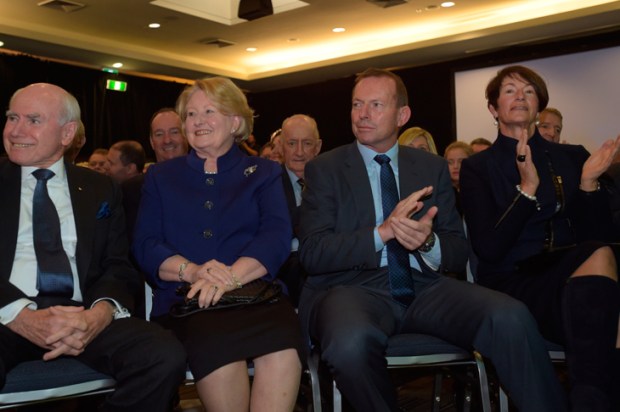Unrelenting school lobby
‘Needs based [school] funding is used as a proxy for arguments for more funding.’ Indeed it is, and I never thought that I would read these words from a Minister for Education. Senator Simon Birmingham spoke these words on 15 March this year.
Ever so politely, the minister was telling his audience of school administrators that the ideology of equity, which flows through every pore of the education industry’s thick hide, was hollow and abused by the industry to fill its pockets. Equity ideology demands that no amount of money should be left unspent on a child who may possibly have an ounce of talent undeveloped by an educator. So successfully has equity ideology been churning out of education unions that between 1987 and 2012 total Australian government spending on schools doubled while student numbers increased by only 18 per cent.
Australia’s performance in the OECD’s Programme for International Student Assessment tests has declined. In 2000, we ranked 6th for maths, 8th for science and 4th for reading. In 2012, Australia dropped to 19th for maths, 16th for science and 13th for reading.
Personally, I don’t believe that country rankings would shift greatly in relatively short timeframes. Nevertheless, it’s not a good look for Australia.
The Grattan Institute’s Widening Gaps report claims that ‘learning gaps widen alarmingly as students move through school.’ And that, ‘Many of those falling behind have parents with low levels of education.’ More grist for the industry mill. The correlation between low socioeconomic background and poor student performance is well documented and has been known for a long time. Whether schools can do much about it is moot. The fact is that there are other family, personal and social issues that affect student performance than school funding.
Two of them are conscientiousness and agreeableness. Adam Perkins’ extraordinary book The Welfare Trait: how state benefits affect personality explains that success in life requires more than intelligence. Employment prospects depend on how keen we are to turn up to work on time, to do what we are told, to be polite to customers, to cooperate with colleagues and so on.
Unfortunately, as Perkins reports, ‘Welfare claimants on average possess a personality profile that is less conscientious and agreeable than that of employed citizens.’ Poor language skills are a pathway for such a personality. Perkins notes that children from professional families hear an average of more than 2000 words per hour, compared to an average of more than 1000 words per hour for working class children and only 600 words per hour for the children of welfare claimants. The cumulative vocabulary of children is vastly different. The fact is that parents at the lower end barely speak to their children and, as a consequence, their schooling suffers. As I revealed in my recent book, No contraception, No dole, 60,000 children, or 20 per cent of children born in Australia, are born to a woman when she is on welfare benefits. Further, the number of children born to those on welfare is increasing more quickly than the numbers who have not. Measure for measure performance of Australian children will decline as a consequence of the generosity of the welfare state.
Perkins argues that a ‘welfare state which increases the number of children born into disadvantaged households risks imposing a significant per capita headwind on society.’ Each of those children will, on average, ‘create a burden for the welfare state and the criminal justice system that is four times larger than the burden imposed by average individuals.’ More important, schooling has limited powers to change upbringing and none at all on genes. Even those children subject to a very expensive program of intensive preschool tutoring remain twice as likely as the rest of the population to fall back on welfare or be involved in crime. A crucial finding is the willingness among welfare recipients ‘to have extra children in order to increase welfare income, then to neglect those children.’ Perkins quotes Richard Dawkins who, in his 1976 book The Selfish Gene suggested that welfare benefits should be conditional upon claimants using contraception. Where Perkins differs, however, is his argument that welfare claimants voluntarily limit their reproduction if the welfare state no longer makes it worth their while financially to have extra children.
Perkins argues against mandated contraception. Instead, he suggests that ‘disconnection of reproduction from subsistence’ should be achieved by ‘adjusting welfare generosity until the average number of children born to claimants matches the average number of children born to non-claimants.’
Welfare trait theory
Perkins also makes the point that the intelligentsia are so removed from the lives of the downtrodden they do not appreciate that living on benefits is a life. ‘It would seem that the intelligentsia generally believe that supporting future freeloaders is a price worth paying for protecting unemployed people from starvation.’ Unfortunately, for the intelligentsia, ‘if the welfare trait theory is correct, it will only be possible for them to ignore the problem of growing numbers of people with the employment resistant personality profile for a decade or two.’ Debate has well and truly commenced about how to stop paying the poor to have more children. My observation is that welfare recipients can be better planners when prevented from falling pregnant when on a benefit. The state is funding the inequity that schools want to overcome. Needs based funding is indeed a ruse, but the bigger ruse is feeding the welfare machine.
Got something to add? Join the discussion and comment below.
You might disagree with half of it, but you’ll enjoy reading all of it. Try your first month for free, then just $2 a week for the remainder of your first year.












